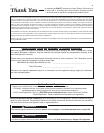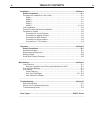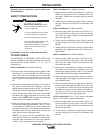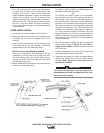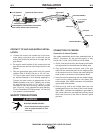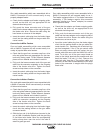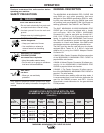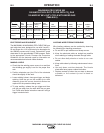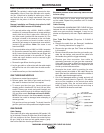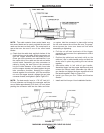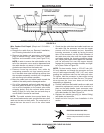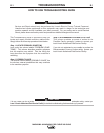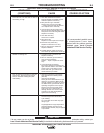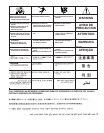
&$!'%!!&
'N 'N"$!'$(' %
!/@2?C2.99%.32AFB61296;2@12A.6921A5?<B45<BAA56@:.;B.9
If for any reason you do not understand the test procedures or are unable to perform the tests/repairs safely, contact your
<0.96;0<9;BA5<?6G216291%2?C602.0696AF for technical troubleshooting assistance before you proceed.
'&!
"$!%
%+"&!%
"!%%
'%
$!
!'$%!&!
Drive rolls turn, but wire will not feed of
wire feeding is rough
Variable or “hunting” arc
Poor arc striking with sticking or “blast-off”,
weld porosity, narrow and ropy looking
bead, or electrode stubbing into plate
while welding
Tip seizes in diffuser
1. Gun cable kinked and/or twisted.
Keep as straight as possible. Inspect
cable and replace if necessary.
2. Wire jammed in gun and cable.
Remove wire from gun and cable
— feed in new wire. Note any obstruc-
tion. Replace liner if necessary
3. Incorrect drive rolls and guide tubes.
Be sure the wire diameter being used is
stamped on drive rolls and guide tubes.
Replace if necessary
4. Gun cable liner dirty.
Clean liner or replace.
5. Worn drive rolls.
Replace or reverse split drive roll type.
6. Electrode rusty and/or dirty.
Replace or electrode if it is rusty.
7. Worn or improper size cable liner.
Replace cable liner.
8. Partially flashed, melted or improper
size contact tip. Replace the contact tip.
1. Contact tip worn or incorrect size.
Replace contact tip.
2. Worn or undersize ground cables or
poor ground connections.
Inspect — repair or replace as neces
sary.
3. Loose electrode connections.
Be sure the following connections are
tight: electrode cable to wire feeder and
power source, work cable to power
source and work, gun cable to wire
feeder contact tip to nozzle.
1. Improper procedures or techniques.
See “Gas Metal Arc Welding Guide”
(GS-100)
Improper gas shielding.
Clean gas cone. Make certain that gas
diffuser is not restricted. Make certain
that gas cylinder is not empty or turned
off. Make certain gas solenoid valve is
operating and gas flow rate is proper.
Remove gun liner and check rubber
seal for any sign of deterioration or
damage. Be sure set screw in brass
connector is in place and tightened
against the liner bushing.
1. Tip overheating due to prolonged or
excessive high current and/or duly
cycle welding.
Do not exceed current and duly cycle
rating of gun.
A light application of high temperature
antiseize lubricant (such as Lincoln
E2607 Graphic Grease) may be applied
to tip threads.
If all recommended possible areas
of misadjustment have been
checked and the problem persists,
<;A.0A F<B? 9<0.9 6;0<9;
BA5<?6G216291%2?C602.0696AF



